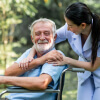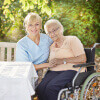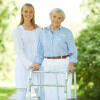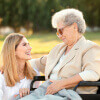Staying hydrated and cool is very important in the heat of the summer.
Redding’s heat can rapidly become dangerous. Scorching temperatures can overwhelm the heat-regulating mechanisms of the body. This creates a medical emergency called hyperthermia requiring immediate treatment to avoid disability, or at worst, death.
- It is important to be aware of the symptoms and know what to do in the event you or others in your company are getting too hot to the point of reaching hyperthermia.
- Hyperthermia can be classified progressively as heat rash, heat cramps, heat exhaustion or heat stroke.
- Heat rash, also known as prickly heat, happens when sweat is prevented from reaching the surface of the skin because of clogs in the sweat ducts. Mild inflammation results.
- Heat cramps are characterized by involuntary muscle contractions. Major muscle groups are often affected and the condition can be quite painful.
While prickly heat and cramps are less serious forms of hyperthermia, these situations should not go unheeded. Failure to seek a cooler environment and increase hydration will only lead to serious complications
Heat exhaustion
Heat exhaustion is revealed by hot, dry skin. Blood vessels dilate in an attempt to cool the skin, giving off the appearance of red, blotchy skin. Lips may become swollen. The skin is dry because the body can no longer sweat effectively. A person who becomes overheated often complains of a headache and nausea. Fainting or dizziness can occur when the person tries to stand up. Although not an easily observed outward sign, a drop in blood pressure also signals that something is wrong.
Heat stroke
Heat stroke also is called sun stroke. It is the most severe form of hyperthermia and requires immediate attention. Body temperature rises to 104 degrees or higher. In addition to the above symptoms of rash, cramping and exhaustion, a person may appear confused, intoxicated or hostile. The skin may feel cold or clammy. Breath and pulse rates quicken in an attempt to increase oxygen intake. The skin may take on a pale or bluish hue. The person may fall unconscious. Death results if medical attention isn’t immediate and effective.
Unfortunately, the elderly are easily susceptible to hyperthermia. Those who are dealing with heart disease, lung disease, a compromised immune system and taking medications for a variety of conditions are more vulnerable to dehydration and sensitive to the burning rays of the sun.
The best way to avoid hyperthermia is to stay hydrated; wear light, loose clothing made with material that breathes; avoid physical exertion during the heat of the day; and try to remain in a cool environment.
If hyperthermia sets in, it is critical to treat it immediately before it becomes life-threatening.
Fortunately, heat rash goes away when the skin cools. Calamine lotion or hydrocortisone creams or sprays relieve heat rash discomfort. In the event that clogged sweat ducts become infected, a physician can prescribe an antibiotic treatment to clear the rash.
Heat cramps
Heat cramps can be stopped without seeking medical care. Simply stopping the activity, moving to a cooler place, drinking lots of fluids and gently massaging the affected area should bring relief.
Heat exhaustion doesn’t require a call to 911 if the person can rehydrate in a cooler environment and ceases to display symptoms. Otherwise, the person is on the way to a heat stroke.
Permanent organ damage can result in victims of a heat stroke. Immediately attempt to cool the victim while waiting for emergency medical treatment to arrive. Get the person to shade or inside to air conditioning. Remove clothing and apply tepid water, fanning the skin to promote evaporation. Place ice packs under the armpits in and the groin area. Encourage sipping of water or an electrolyte-enhanced beverage (no caffeine or alcohol.)
Enjoy the summer, seniors, but play it safe!










